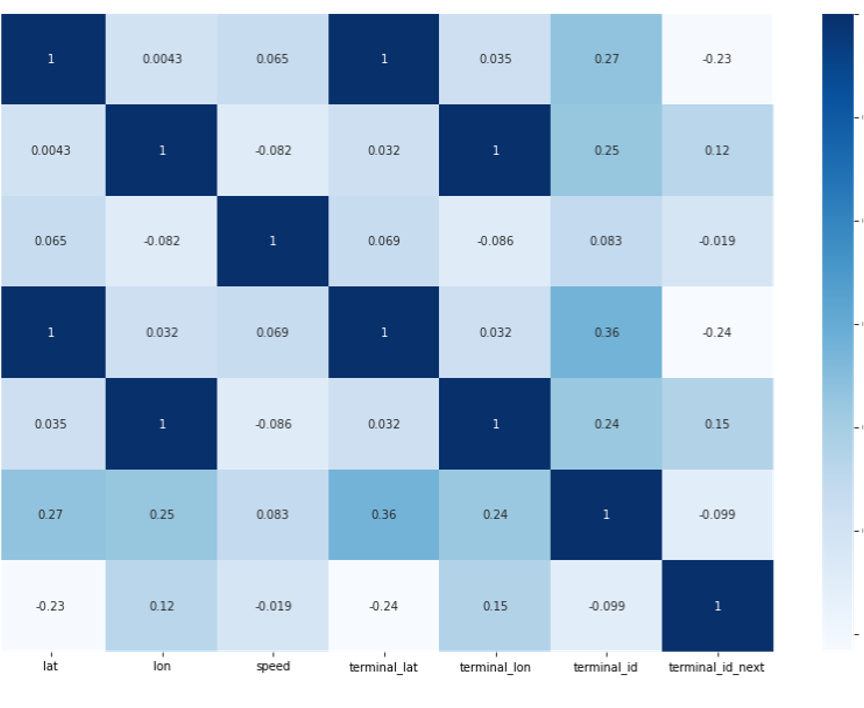Maritime Port Queuing
Based on the ETA and queue position, VesselBot aims to identify the best course of action for a vessel to achieve voyage optimization and minimize waiting time. For this project, vessel events were transformed into stateless events, and terminal forecasting was executed with a specific number of terminals. Best performance Naive Bayes for 20 Terminals provided accuracy 80%. The Time within the Terminal was estimated using the Gaussian Distribution. “Current” queue was calculated, and “soon-to-be” queue was forecasted. The outcome was an accurate estimation of the position in queue and waiting time until berth.
Case Study Contents
- The background
- The challenge: Estimating Queuing Time at Port
- The workflow
- Milestone 1: Forecast the specific Terminal
- Milestone 2: Forecast position in queue & estimate waiting time in case of congestion
- The results
- Recommendations for further actions
- Conclusion
- Online Presentation
1. The background
VesselBot is a technology company that provides digital solutions to the international maritime industry. Using advanced technologies such as Artificial Intelligence and Big Data, they develop both off-the-shelf and tailor-made digital solutions that serve the industry’s needs.
VesselBot envisions a shipping industry where leading-edge technology is standard practice and serves every aspect of the marine ecosystem using:
- Maritime Data Analytics
- Pattern-Recognition Software
- ML and AI Applications
They want to help maritime professionals enhance their commercial acumen and decision-making practices while serving environmental protection initiatives.
2. The challenge: Estimating Queuing Time at Port
Upon arrival at port, vessels wait until a berth becomes available. Waiting time depends on congestion at the Terminal as well as the position of the arriving vessel in the queue.
It is critical to know in advance an estimate of the waiting time at the planned Estimated Time of Arrival (ETA), so VesselBot assigned the project to Thalassa Mia Glende.
Based on the ETA and Queue Position, VesselBot aims to identify the best course of action for a vessel - speeding up or slowing down - to achieve voyage optimization along the lines of:
- minimizing fuel consumption
- minimizing port waiting times
- reducing GHG emissions
3. The workflow
Data filtering for Statistical Process Modeling
We created datasets utilizing the available data and implemented filters prior to modelling in order to define, detect and correct errors and minimize the impact on succeeding analyses.
Information about the data used
- Data: 14 csv files
- Size: 1,5 GB
- Events: 4.665.514
The technology
The tools used for the execution of the project included:
- Domain
- EDA
- Visualization (Matplotlib, Seaborn, Folium)
- APIs
- Feature Engineering (pandas, numPy)
- Machine Learning (scikit-learn)
4. Milestone 1: Forecast the specific Terminal
Assuming a First In, First Out (FIFO) method, VesselBot wanted to identify the appropriate vessel speed to achieve a better position in the queue upon arrival. Knowing the port, we first worked towards identifying the specific Terminal.
Terminals at specified ports were identified using an automation mechanism. To forecast the specific Terminal for each vessel we used the following data:
- Cargo
- Draught
- Speed
- Latitude
- Longitude
- Terminal
- Locode
Target: Next Terminal
Classes: 1602

Modelling with a big number of algorithms.
- Max Accuracy: 80%
- Number of Terminals: 20
- Classifier: Gaussian Naive Bayes
Recommendations for further actions – Part Ι
- We recommend implementing a Port-focused rather than a Terminal-focused approach.
- We recommend using Deep Learning and considering events as sequences.

5. Milestone 2: Forecast position in queue & estimate waiting time in case of congestion.
After identifying the Terminal, we work towards identifying:
- Position in queue
- Waiting time in case of congestion
We used the Port of Piraeus, as seen in the image. Blue and green dots are vessels in at berth, and red dots are vessels that are queuing.

Using data we predicted the queue.
- Vessels “Currently” in Terminal followed the Gaussian Distribution.
- So we assumed Vessels “Soon-to-be” in Terminal would follow the same Gaussian Distribution.
Methodology used:
“Current” → Anchorage Queue + ETAs + (mean+median) /2
“Soon-to-be” → Anchorage Queue
6. The results
Using the data and methodologies we described VesselBot can estimate for any given vessel:
- The position in queue
- Waiting time until berth
Evaluation of Results
Before concluding the project we performed an evaluation of the results.
- Data ‘enter’ & ‘exit’ events
- Data ‘enter’ & Estimated ‘exit’ events

7. Recommendations for further actions
We recommend using Machine Learning algorithms to focus on each unique vessel based on its individual characteristics and identify the time needed to conclude all the procedures at the Terminal.
8. Conclusion
Thalassa Mia Glende chose a Port-Targeted approach using Deep Learning methods and considering events as Sequences. Vessel events were transformed into stateless events. The “current” queue was calculated, and the “soon-to-be” queue was forecasted. The project was successful and provided a methodology for estimating the position in queue and the waiting time until berth.
9. Online presentation
For more information on Big Blue Data Academy projects, you can contact us here.
Invitation
Companies in Greece are invited to participate in the Big Blue Training Process and assign data-driven projects to Bootcamp students.


.jpg)